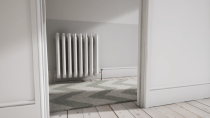I have recently started running a short series of workshops for students studying Media Production in the subject of real-time 3D graphics and asset production. They are all beginners so the course is just a sample of the fundamental software and processes.
The output platform is the Unreal Engine and the asset production tools will include Substance Painter, Designer and Bitmap2Material.
For their Painter workshop, rather than get them to undertake Allegorithmic’s Substance Painter – Texturing for Beginners series, I will instead provide a collection of assets for them each to build a scene. The idea is that rather than a single mesh, they will work with a range of meshes each with require different types of material to be created and then arrange them in whatever way they wish to create a scene.
I will still advise the students that if they wish to learn how to use all of Painter’s features they should watch the video tutorial playlist from Allegorithmic.
The meshes will be from a contemporary interior that has industrial period features (a cast iron radiator in this instance). This will encourage research into the scene in general as well as get them learning Painter for basic tasks. I’m probably only looking for Smart Material application with some property editing as opposed to complete new materials built from scratch.
The scene below is indicative of what they will be given and demonstrates a potential end result. It will also present the students with an opportunity to explore the differences between dynamic and static lighting.



Update
I am no longer going to be using this scene for the workshop. Instead, a colleague is going to provide me with his models of his experiments in hard surface modelling, which are nice and chunky and industrial – perfect candidates for a first foray in Substance Painter.
Therefore this scene isn’t needed as tutorial. However, rather than leave it as a bit of a non-project, I have decided to dedicate this weekend to finishing it off as a sort of diorama. I will create a few more models and it might still feature in one of the workshops as a case study for how to get focus attention and detail on specific areas.
One of the models I wanted to add was either carpet or a rug to practice Material Tessellation and Parallax Occlusion Mapping. POM is a hardware (DirectX) feature where a height map creates a field of maps that appear to rise from the surface of a material with great detail. This feature doesn’t add complexity to the geometry, it simply gives an illusion of extra depth like a Normal map only this looks more displacement. Tessellation on the other hand, DOES work by subdividing geometry via the material shader combined with a displacement map to give the illusion of a more detailed model (less perfectly straight edges).
I created a rug and applied both the above features to the material to yield some pretty decent results. I also added Tessellation to the materials applied to the painted woodwork to make it seem more “period” of an older house:



